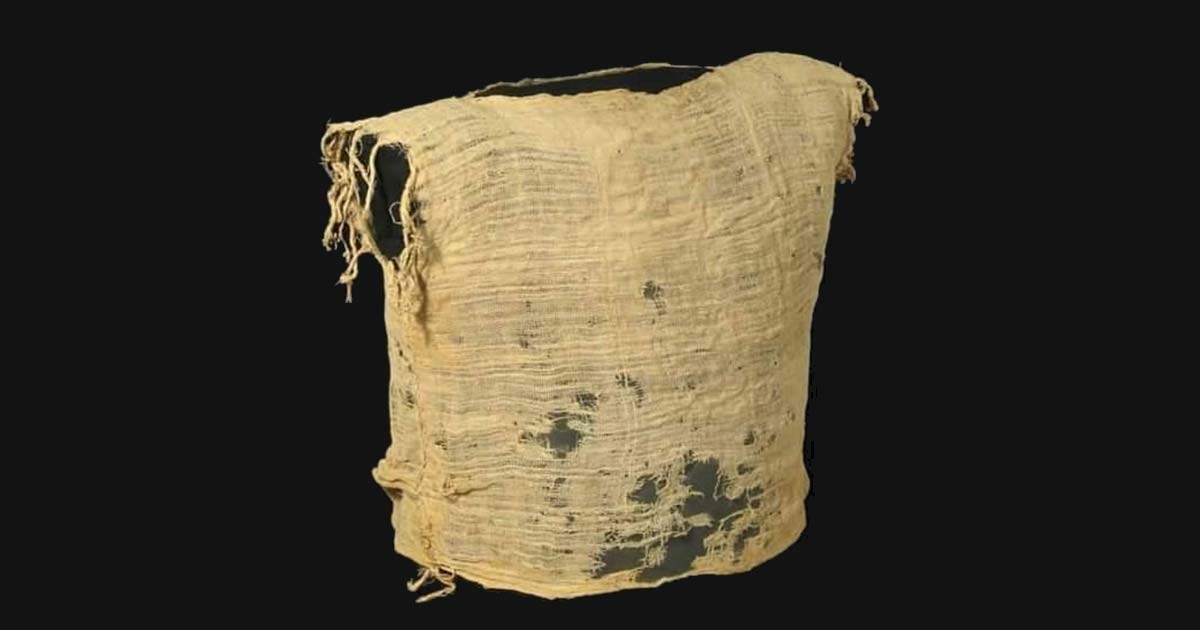1,900-year-old Knot-Frilled Child’s Gown Discovered in Israel's Cave of Letters
The Cave of Letters in Israel has yielded many artifacts from the famous Bar Kokhba revolt, offering deep insights into Jewish history. Recently, a 1,900-year-old child's nightgown with intriguing "knots" was discovered, prompting speculation regarding their protective significance within ancient Jewish practices and beliefs.
A Museum in a Cave
The Cave of Letters is situated in the Judean desert’s Nahal Hever Valley, on the western shore of the Dead Sea, approximately 25 miles (40 kilometers) south of Qumran, in Israel. Ever since its discovery in the early 1960s, and its subsequent excavation by archaeologist Yigael Yadin, this famous archaeological site has provided deep insights into ancient Jewish history.
- Cave of Letters: Probably the Most Important Cave For Ancient Jewish History
- Does the Brewer Cave Story Unlock a Hidden History?

Left; The Cave of the Letters in Nahal Heber in the Judean Desert, (IAA) Right; One of the scrolls previously found in the cave. (Public Domain)
Papyrus letters and artifacts dating to the Jewish Bar Kokhba revolt (132-136 AD), against Roman rule, have described the desperate circumstances faced by the Jewish rebels during the revolt, serving as a poignant reminder of their struggles and perseverance.
Now, in a recent exploration within the Cave of Letters, archaeologists have brought to light a nightgown hailing from 1,900-years-ago, and a unique historical narrative is encapsulated within the fabric of this ancient child's garment.
- Two Coins Found in Israel Prove That Jewish Revolt History is Wrong!
- New Dead Sea Scrolls Discovered: Archaeologists Excited to Unearth Two New Fragments in the Cave of Skulls
Exploring the Ancient Textile Library
The Cave of Letters is anything but easy to get to. It can only be accessed by one cave entrance that requires a dangerous 15.24 meters (50 feet) climb, up sheer cliff face. According to a Facebook post by the Israel Antiquities Authority (IAA), Dr. Orit Shamir, an IAA textile specialist, said that over the years, “thousands of scraps of textiles dating from the Roman period have been found at different sites in Israel”.
But what is unique to the Cave of Letters are the textiles with “intriguing “knots,” that are hung like small pendants around the bottom of garments. Dr. Shamir said textile knots were created by tying part of the fabric around a core of: “resin, salt, iron sulfate, asphalt, henna, seeds,” and other rot-resistant materials. A flax thread was then wound around the material several times to secure the bundle, added Shamir.

The ancient vest is adorned with knots around the hem, which has religious significance. (Israel Antiquities Authority)
Examining The Somewhat “Shabby” Gown
Dr. Shamir said an analysis of the textile determined it was a “child’s undergarment,” that was probably worn beneath “a colorful wool upper garment for decoration.” The gown comprises two panels of the same size, that were sewn together along their upper edges with a central opening for the neck. Around the neck hole, a series of decorative flax threads hung down from both sides.
The weaving was a simple “twining technique” and Shamir said “occasionally mistakes were made.” Furthermore, the thickness and density of the threads “are not uniform,” and the sewing was “not meticulous.” The gown had suffered from significant wear and tear, and several holes were identified. And like the other textiles recovered from this site, this gown was also knotted around the hem.
Knotting For Protection?
Dr. Shamir speculates that the knots hanging down from the hem were perhaps intended “to protect the child from illness and harm.” The ancient textile specialist said “you can really imagine a mother hiding salt for protection and tying up a piece of the flax garment while reciting prayers and hopes for her son or daughter”.
In ancient Jewish religious practices, knots held symbolic significance and were most often utilized for protective purposes. Intricate knotting, often seen in prayer shawls (Tallit) and phylacteries (Tefillin), were crafted in specific configurations symbolizing unity, divine connection, and spiritual protection.
The act of tying knots in these religious articles was imbued with intent, which in turn was associated with invoking divine protection against malevolent forces. Therefore, knots were tied during the recitation of prayers and the reading of sacred verses, in effect, reinforcing the belief in the power of words and symbols to provide spiritual defense.
Top image: Childs gown found in the Cave of Letters, Israel. Source: Israel Antiquities Authority
By Ashley Cowie

















